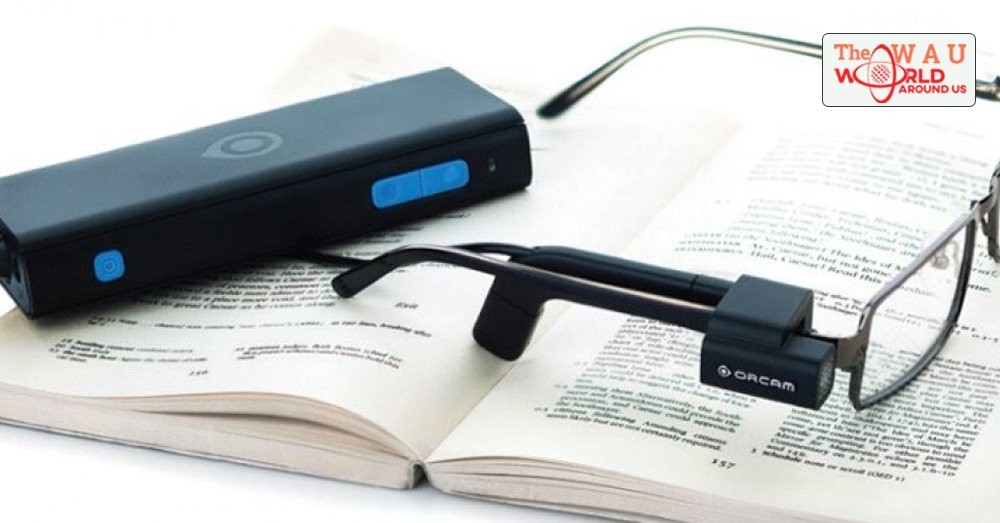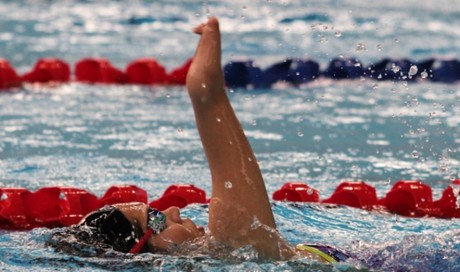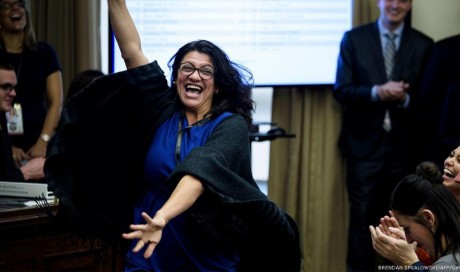Fifteen - year - old school student Ofek Sasson is typical in many ways. She’s studying music, plays the piano and loves to sing. She gets pretty good grades in her Ramat Gan school. But she also has to work longer and harder than her classmates to get the same results.
Sasson was born with a vision impairment. For her entire life, her vision is limited to objects in very close vicinity, and even those she has trouble seeing sharply..
Reading textbooks is a challenge, street signs an impossibility.
For years, Sasson has been relying on the latest technology to help her make her way through the world. The vast majority of her books are digitized, allowing her to easily read enlarged versions on a screen. She uses special computer input methods designed for the blind to help her write. Having digitized notes is important; she couldn’t read them without a zoom feature.
Even with all the tools at her disposal, reading her assignments takes longer, writing her responses takes longer, and absorbing everything takes longer.
“A regular kid reads a page in a few minutes while she takes much longer, and only sees a few words at a time, and has more trouble comprehending,” says her father, Sharon.
But two years ago, Sharon heard about a new technology that offered hope. It was called OrCam, and it was designed by some of the same people who founded Mobil- Eye, the Israeli self-driving car powerhouse.
Whereas MobilEye uses camera and sensor technology to read roads and is helping fuel the driverless car revolution, OrCam is designed to help people see and read by capturing text in an image and reading it back in a clear voice.
Sharon only managed to obtain a unit five months ago, and had to pay out NIS 8,000 for it, with no help from the Health Ministry or his insurance.
But the investment has been worth it, he says.
Ofek agrees. “It solves a lot of problems for me,” she says amiably.
The device is fairly small and unobtrusive. One portion, with a camera, attaches to her glasses, and a small wire connects it to the computational hub, which she generally just holds in her pants pockets.
When the time comes, all she needs to do is push a button or, more conveniently, gesture toward some text, and the camera snaps a photo, analyses the text, and reads it to her.
When she started using it, she says, she was surprised at how much it simplified life.
“It made things much easier. I was so happy that I could simplify the course of my studies during the day, because instead of trying to read and getting tired, I can just listen a few times and understand that way,” she says.
Not that OrCam is perfect.
“There are times that it speaks a little incorrectly, but you can figure it out, and there are new versions all the time,” she says.
It’s also not useful in every situation. “Primarily, I use it for school. If, let’s say, I go to a coffee shop, I can read the menu. I can also get some directions. But most of the uses are educational,” she says.
Though she is able to get to and from school on her own, her father doesn’t like her wandering around, even with the assistance from OrCam in reading street signs. It’s just not powerful enough yet, he says. But that doesn’t mean it won’t be one day.
“This machine is amazing, if she goes to the supermarket it can read the names of the products. In the future, I can foresee how it will help her in many more ways,” he says. It also has features that can identify the people she is talking to and tell her what credit cards or monetary notes she’s holding.
The Education Ministry is currently in talks about the possibility of integrating the system into Israeli schools to assist children with learning disabilities.
“I saw the technology as part of the effort to help blind children and I was very impressed by the technology and by its ability to help integrate and assist blind children,” Education Minister Naftali Bennett said.
OrCam was the brainchild of Ziv Aviram and Prof. Amnon Shashua, Mobileye’s co-founders. Though Mobileye’s technology – using sensors and computing smarts to navigate roadways – seems of a kind with OrCam, Aviram says that one did not spring naturally from the other.
“It’s not the same technology, it’s not like it’s some MobilEye development that grew into OrCam,” he said.
Rather, the decision came after putting serious thought into how they could help more people with their technology.
“It seemed very logical to put something together for people who have vision impairment – not just blind people, but people whose problems can’t be fixed by glasses,” Aviram said.
OrCam, which has already sold thousands of units and is available in English, German, Hebrew and set to debut in Spanish and French, may be just the beginning.
Indeed, earlier this year, Shashua introduced the company’s next major product called “MyMe,” which is still in development. He says it will be the first wearable artificial intelligence device, and though it is designed for regular consumers, it may also have vast implications for the elderly and those with visual impairments.
Shashua likens the new technology, which looks like a little clip-on camera, to the smartphone in the movie Her, in which Joaquin Phoenix’s character kept his smart phone in his breast pocket with the camera facing outward so his love interest, the very human operating system, could see the world with him.
By clipping the device to a shirt, it can monitor everything: where you go, who you see, what you eat, what you hear.
The main thrust of the device is to amplify the usage of a “personal assistant” such as Apple’s Siri or Microsoft’s Cortana, providing the service and helpful tools people need to more efficiently move through their day. It’s supposed to pay attention to who you meet, what you talk about, how they feel during your conversations, how you spend the various hours of your day.
But the technology could also be used in other ways.
Imagine, for example, that OrCam could gave Ofek greater freedom because it could guide her with directions, taking note of the easiest path for her to go from one place to another, what number bus might be approaching, and letting her know where she is at a given moment. Imagine that it could describe to her who is sitting in a room that she enters, and what the mood of the room is based on sounds and facial expressions.
Imagine that in the grocery store, it not only identified a product she picked up, but remembered her shopping list and guided her to where the items she wants are located.
All that is potentially around the corner, and to make sure it gets there, the company has put out a kit for developers to write their own applications for the device. The possibilities, Shashua said, are endless.
For Sharon, Ofek’s dad, it is a relief that companies are focusing on these kinds of technologies.
“Ofek is already a young woman with a lot of talents,” he said “The company is developing something for a relatively small part of the population, and you have to tip your hat to them. To spend so many years on developing it – they do good work and they will continue to do it,” he said.
As for OrCam, Aviram says he eventually foresees an Initial public offering (IPO) or stock market launch for the company.
“This is what a normal company does. An IPO is not a bad thing, it’s part of a growth process,” he said. First, however, he wants to finishing building out the company’s products, sales capacity and manufacturing, as he did with MobilEye.
If that’s any indicator of what’s to come, he’ll be very happy. When MobilEye went public in 2014, it set the record for the largest Israeli public offering in the US.
Share This Post















